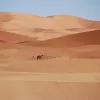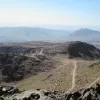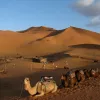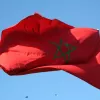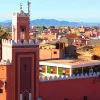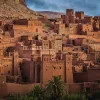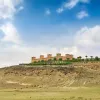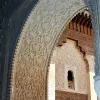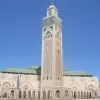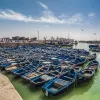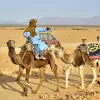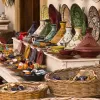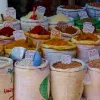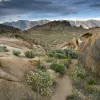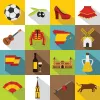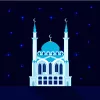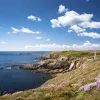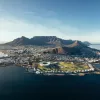Important update from TheSchoolRun
For the past 13 years, TheSchoolRun has been run by a small team of mums working from home, dedicated to providing quality educational resources to primary school parents. Unfortunately, rising supplier costs and falling revenue have made it impossible for us to continue operating, and we’ve had to make the difficult decision to close. The good news: We’ve arranged for another educational provider to take over many of our resources. These will be hosted on a new portal, where the content will be updated and expanded to support your child’s learning.
What this means for subscribers:
- Your subscription is still active, and for now, you can keep using the website as normal — just log in with your usual details to access all our articles and resources*.
- In a few months, all resources will move to the new portal. You’ll continue to have access there until your subscription ends. We’ll send you full details nearer the time.
- As a thank you for your support, we’ll also be sending you 16 primary school eBooks (worth £108.84) to download and keep.
A few changes to be aware of:
- The Learning Journey weekly email has ended, but your child’s plan will still be updated on your dashboard each Monday. Just log in to see the recommended worksheets.
- The 11+ weekly emails have now ended. We sent you all the remaining emails in the series at the end of March — please check your inbox (and spam folder) if you haven’t seen them. You can also follow the full programme here: 11+ Learning Journey.
If you have any questions, please contact us at [email protected]. Thank you for being part of our journey it’s been a privilege to support your family’s learning.
*If you need to reset your password, it will still work as usual. Please check your spam folder if the reset email doesn’t appear in your inbox.
Morocco
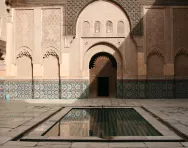
Morocco is a coastal country in North Africa. The capital is Rabat and the two official languages spoken in Morocco are Arabic and Berber.
The west side of Morocco is a coastline on the Atlantic Ocean, while the northern coastline is on the Mediterranean Sea.
Morocco has mountainous regions and large desert regions and is bordered by Algeria, with the Western Sahara to the south (this is a section of land that Morocco claims belongs to it and calls it its Southern Provinces; ownership of this piece of land is still under dispute though).
Top 10 facts
- Officially Morocco is called The Kingdom of Morocco.
- Although Rabbat is the capital city, Casablanca is the largest city and is home to around 4 million people.
- Many Moroccans speak French.
- Moroccan currency is called dirham.
- There is only 8 miles (13kms) of water between Northern Morocco and Europe.
- The Barbary lion is Morocco’s national animal.
- In Morocco it is thought to be rude to touch food with your left hand.
- A famous 1942 Hollywood movie called Casablanca was named after the Moroccan city.
- Morocco has a population of over 33 million people.
- The main religion of Morocco is Islam.
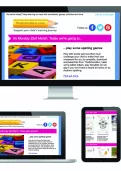
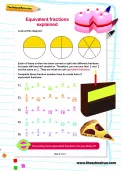
Start your child on a learning programme today!
- Weekly English, maths & science worksheets direct to your inbox
- Follows the National Curriculum
- Keeps your child's learning on track
Did you know?
- The border between Morocco and Algeria has been ‘closed’ for over 20 years (since 1994) because the two countries do not agree on certain things.
- The Atlas Mountains are found in Morocco. They reach up to 3,000 metres (over 9,000 feet) and are home to the Berber people of Morocco. Temperatures in the Atlas Mountains range from about 10ºC to 30ºC.
- Riads are traditional homes of the wealthy, found in Moroccan cities, and are built around an internal courtyard or garden.
- Traditional food in Morocco includes dishes called tagine which is the name of the clay pot in which they are cooked. Moroccan dishes are often served with couscous and sweet mint tea is a very popular drink.
- You can often see goats in Argan trees out in the country of Morocco. The climb into the trees to eat the leaves.
- Many Moroccans don’t have a bath at home, but go to local baths called hammams to wash. This is a very social event, especially for women, and involves moving between different ‘bathing’ rooms and using a black oily soap that you scrape off with a hammam glove.
Look through the gallery below and see if you can spot the following:
- The sand dunes in Morocco
- The Atlas mountains
- Camels in the Moroccan desert
- The Moroccan flag
- A mosque minaret in Marrakech
- Ait-Ben-Haddou
- A Moroccan landscape
- Arc decoration in Marrakech
- A mosque in Casablanca
- Boats in Essaouira
- Travelling by camel in the Sahara desert
- Tajine pottery
- Spices in a Moroccan market
Gallery
About
Morocco is an African country and sits in the far north west of this continent. About half the population of Morocco are the Berber people, who have inhabited the area for over 4,000 years. They tend to live in the mountainous parts of Morocco and are often farmers. Berber language hasn’t always been recognised as an official language of Morocco, but is now and is divided into three distinct dialects (or variations) of the language.
The other half of the population is made up of Arab people. About 1,300 years ago, in the 7th and 8th centuries, Morocco was invaded by Arabs who brought the Islamic religion to the region. The Arab communities tend to be in the towns and cities.
The clothes worn in Morocco are very different to western clothes and often cover the whole body. Traditionally men and women wear a djellaba which is a long hooded garment. Women also wear a scarf on their heads, and although more modern clothes are often worn in the towns and cities, they still tend to cover up arms and legs and women often wear scarves on their heads. It is considered polite for visitors to Morocco to dress in a similar way to locals.
The medina is the ‘old town’ in a Moroccan city or town. It is a walled section of the town or city and tends to have quite narrow streets with houses and shops opening straight onto the street. You often find mosques and palaces in the medina as well as many riads (traditional houses).
Moroccan markets that sell spices, clothes, shoes and lots of materials and traditional goods are called souks. The souks tend to be found in the medina of a town or city and are made up of lots of small shops lining narrow streets. It is very easy to get lost in the maze-like lanes of a souk.
Traditional dishes in Morocco include harira (a type of soup), couscous (a grain that is then combined with other foods), and tagine (a kind of stew). These are mainly meat-based dishes and have lots of delicious spices added to them.
Morocco is officially a Muslim country. That means that the main religion is Islam. Islam is practiced at home and in mosques. Some of the mosques in Morocco are spectacular, beautiful buildings.
Words to know
Arab – a member of a group of people who originally came from the Arabian Peninsula.
Berber – the indigenous or ‘original’ people of North Africa.
Djellaba – a long hooded outer garment or item of clothing worn by both Moroccan men and women. It is also worn in other Muslim countries.
Dialect – a regional ‘version’ of a language that may use its own words, pronunciation or grammar for certain things.
Hammam – public baths for washing in. These are very social places.
Islam – a religion in which followers believe in Allah as the only God, and in his prophet, Mohammed. People who follow the Islamic religion are called Muslims.
Medina – the old part of a North African town. It tends to have walls around it.
Mosque – the building used for Muslim people to worship in.
Muslim – a person who follows the Islamic religion.
Riad – a large traditional house found in the medina of a town. Traditionally they were owned by wealthy people.
Souk – a North African marketplace.
Tagine – a traditional North African conical clay cooking pot. Also, the stew made in this traditional pot.
Names to know
Mohammed VI of Morocco (1963-present) – the current king of Morocco, Mohammed VI came to power in 1999. Under his rule the Berber language has been reinstated as a national language, and women’s rights have improved. He has also started appointing a prime minister who makes decisions about the country in parliament.
Khalid Khannouchi (1971-present) – Khannouchi is a well-known Moroccan marathon runner who used to hold the world record for the fastest marathon time.
Just Fontaine (1933-present) – Fontaine was a famous football player who was born in Morocco but who played for the French national team in the 1953 World Cup. He scored many goals throughout his career and although he mainly played for a French team, he stared his career playing for a local Marrakech team.
Idris ibn Abdullah (745-791) – the first Islamic ruler, and founder of The Kingdom of Morocco, Idris I of Morocco reigned from 788-791.
Related Videos
Just for fun...
- Download a Moroccan Tile colouring page
- Have a go at making a cup of traditional Moroccan mint tea
- Cook some delicious Moroccan food, including tagines (casseroles)
- Learn to sing “Arsomo Baba”, a Moroccan children’s song about children drawing and painting
- Make your own intricate Zillij designs
Find out more
- Morocco: the children's guide
- A Morocco country profile from the BBC
- 20 facts about Morocco for kids
- Find out about the Moroccan tradition of cous-cous Friday
- See pictures of unmissable places and sights in Morocco, including camel trekking and natural wonders like the Todra Gorge
- Learn about Moroccan textiles and the areas where they're woven
- Information about the Atlas Mountains in Morocco
- Barbary macaques, Europe’s only species of primate, are found in Morocco
- The Berber people are an ethnic group found in Morocco
- Find out how zellige mosaics are made
Children's books about Morocco
See for yourself
- A Lonely Planet introduction to visiting Morocco
- Eat at a Moroccan restaurant
- Look at some Moroccan maps
- You may even be lucky enough to visit Morocco!
